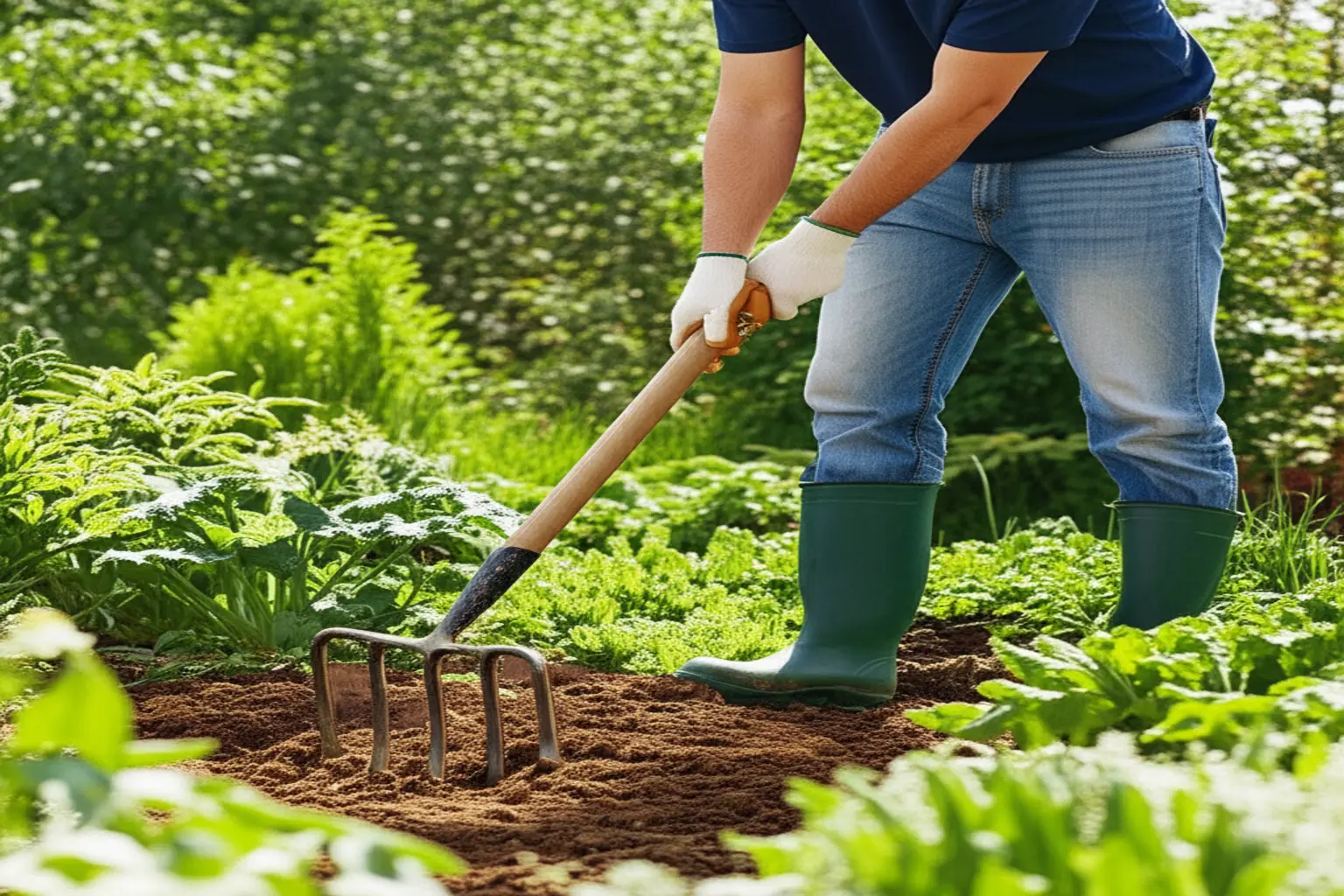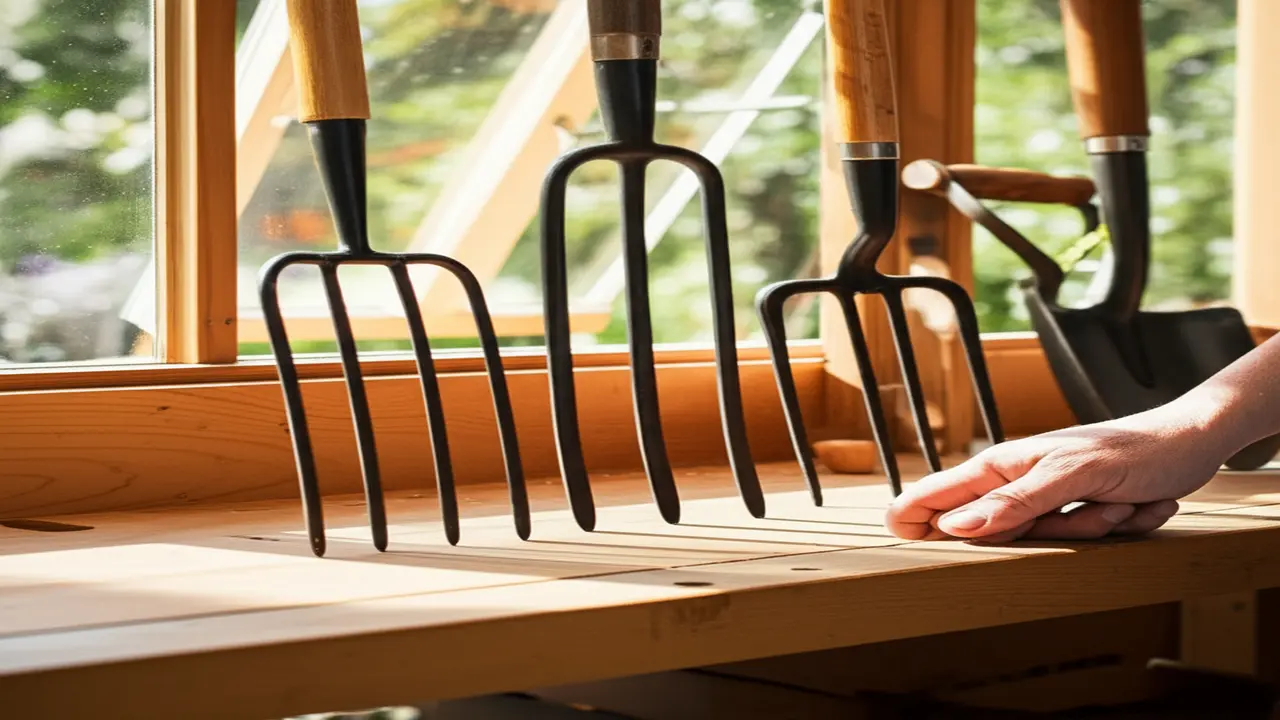
1. Understanding Garden Forks: Types and Selection
Garden fork technique begins with choosing the right type, which directly affects efficiency and user comfort. There are three main garden fork types to consider:
– Digging forks: Designed for loosening soil, these have short, strong tines ideal for breaking compacted earth without cutting through roots. Their sturdy build supports deep gardening tasks.
– Border forks: Smaller and lighter, suitable for delicate work along plant borders. They feature thinner, closely spaced tines that allow precise soil turning without damaging adjacent plants.
– Manure or pitchforks: These have longer and often more tines, designed for moving mulch or compost. The wide spacing prevents material from clogging the fork.
Selecting a garden fork depends on the tasks and personal ergonomics. Key factors include:
– Tine shape and length: Match deeper or lighter soil work.
– Handle length and material: Longer handles provide leverage; materials like ash wood or fiberglass balance weight and durability.
– Overall weight: Heavier forks provide power but may tire the user.
Correct tool selection supports effective and ergonomic garden fork technique, preventing strain while maximizing soil preparation quality. For more on garden tools, see our guide on soil cultivation tools.
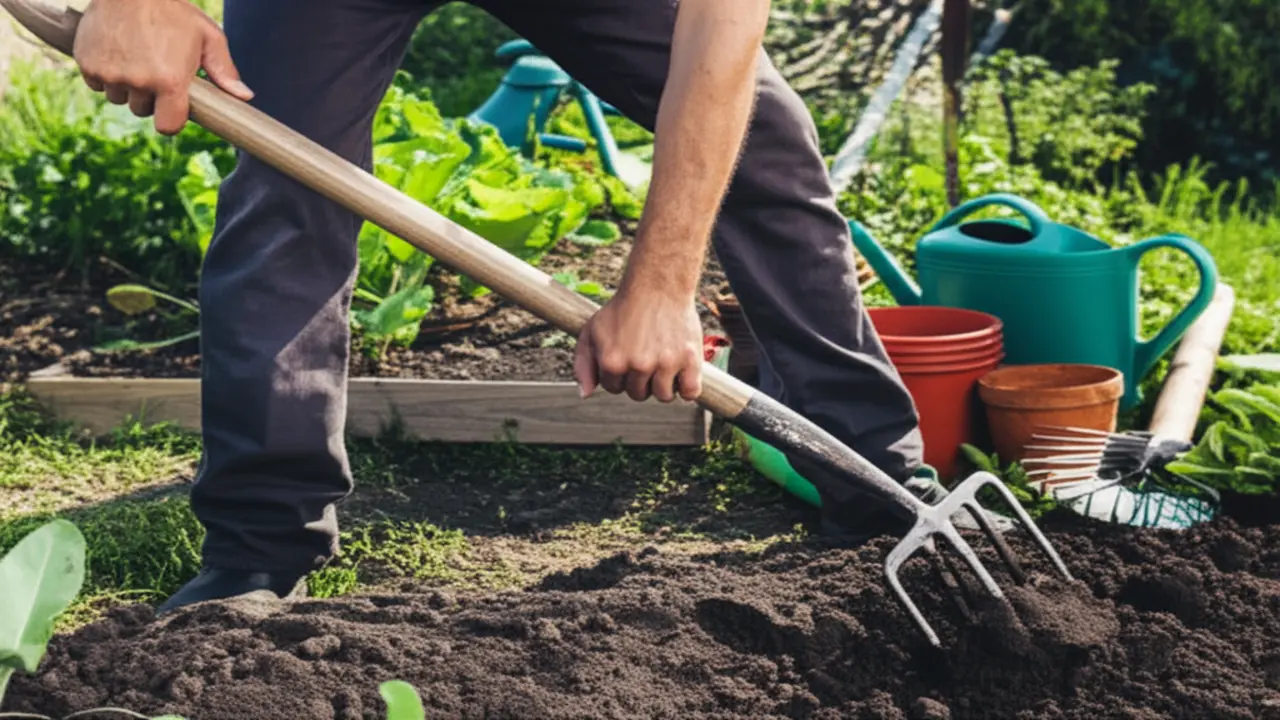
2. Core Garden Fork Techniques: Grip, Stance, and Basic Movements
Mastering the garden fork technique starts with proper grip and stance to maximize efficiency and prevent injury. Place one hand near the top of the handle and the other about halfway down for balanced control. Stand with feet shoulder-width apart, positioning your body weight to assist the soil penetration instead of relying solely on arm strength.
To insert the fork tines, use the footplate by pressing down firmly with your foot. This allows the tines to penetrate compacted soil smoothly. Once inserted, use a levering motion by pushing down on the handle, which loosens the soil gently without excessive force.
When lifting soil, maintain a controlled, steady movement to protect your back from strain. Use your legs to power the lift rather than bending your back. This technique is especially important when working with heavy or dense soil.
These core motions form the foundation for efficient gardening tasks like aerating, digging, or turning soil. By consistently applying these principles, you improve endurance and reduce fatigue, making your gardening sessions more productive and enjoyable.
For detailed guidance on choosing the right garden fork, see our chapter on selecting garden tools, which discusses types and features suited for different soil conditions and gardening needs.
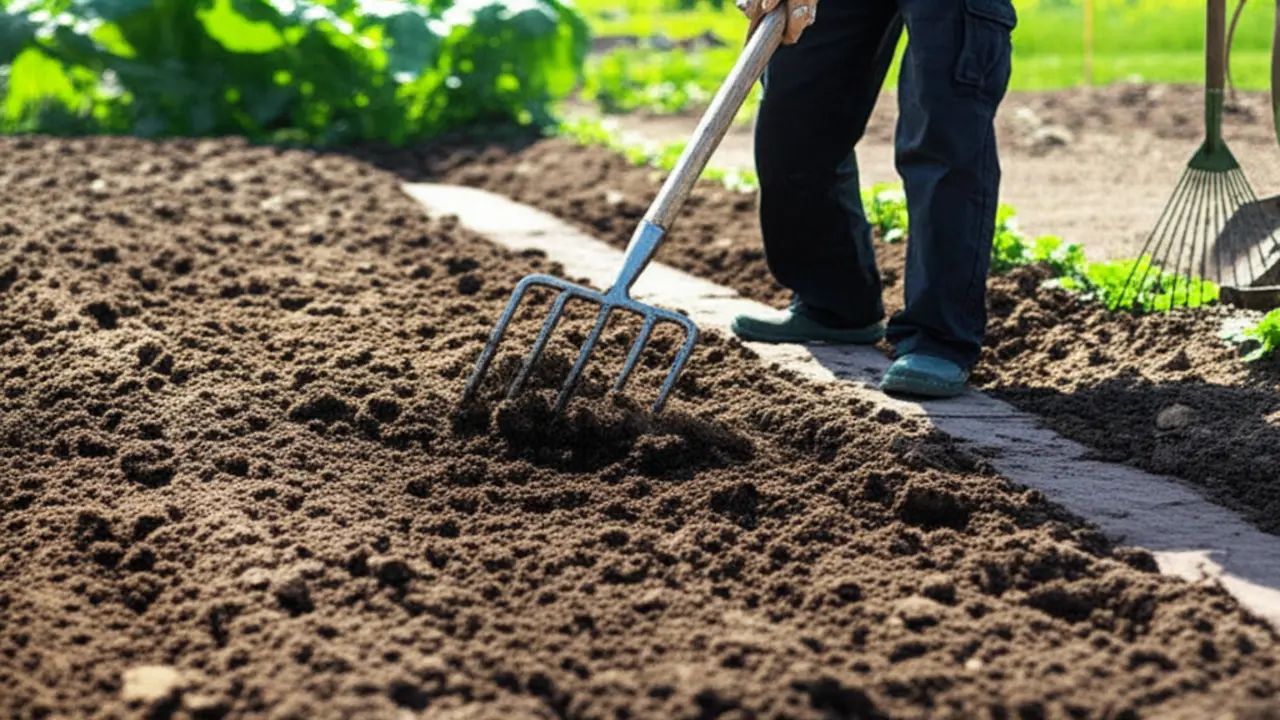
3. Soil Preparation Techniques: Turning, Digging, and Bed Preparation
Effective soil preparation is essential for a thriving garden bed in 2025. The garden fork technique offers a hands-on method to turn and dig soil efficiently. Start by dividing your garden into manageable sections. Use the fork to break up large clods, ensuring better aeration and drainage. Incorporate organic amendments such as compost or well-rotted manure while turning the soil; this enriches nutrient content and supports healthy plant growth.
Double-digging is a notable technique involving two layers of soil loosening. Begin by removing the first spade of soil, then use the garden fork to break the subsoil beneath without mixing it. This improves root penetration and soil structure. Bed preparation after turning ensures the soil is even and ready for planting, preventing waterlogging and promoting uniform seed germination.
For practical tips, explore our guide on soil types and garden forks for a comprehensive approach. Implementing these techniques helps maintain healthy soil and supports sustainable gardening practices.
4. Aeration Techniques: Enhancing Soil and Lawn Health
Aerating soil and lawns plays a critical role in maintaining a healthy garden environment by improving soil structure and promoting root development. The garden fork technique is a straightforward yet effective method, especially beneficial in 2025 for managing compacted soil. This technique involves driving the fork tines vertically into the soil and then wiggling them to create air channels. For grass lawns, spacing the fork insertions evenly prevents damage while enhancing oxygen flow and water drainage. In garden beds, aeration helps reduce soil compaction, encouraging deeper root penetration and nutrient absorption.
Benefits of the garden fork technique include improved drainage, which reduces water pooling and root rot risk; enhanced root growth through better oxygen supply; and decreased soil compaction that often limits plant health. This method is simple to execute without specialized equipment, making it accessible for most gardeners aiming for sustainable lawn and garden care. Incorporating regular aeration sessions, especially during active growing seasons, strengthens your garden’s resilience and overall vitality.
For more on soil health management, see our guide on improving drainage systems and tips for sustainable garden care.
5. Compost Turning Technique Using a Garden Fork
The garden fork technique is a practical and efficient method for turning compost piles to promote faster decomposition and prevent unpleasant odors. The garden fork’s design, with its sturdy tines, allows for easy penetration, lifting, and turning of dense organic materials. This tool excels at mixing layers thoroughly and introducing air to the core of the compost pile, which is crucial for aerobic breakdown.
To perform effective compost turning using a garden fork, follow these steps:
1. Begin at the outer edge of the compost pile.
2. Insert the garden fork deep into the pile, reaching toward the center to access the densest material.
3. Lift and turn the compost, moving material from the center to the outer edges and vice versa to ensure even aeration.
4. Break up any compacted clumps to maintain good airflow.
5. Repeat this process systematically around the entire pile to expose all parts to oxygen.
Regular turning every 1-2 weeks accelerates microbial activity, reducing the composting time and minimizing odors caused by anaerobic conditions. This garden fork technique is practical for home gardeners and small-scale composters, combining simplicity with effectiveness. For more detailed composting methods and maintenance tips, see our guide on organic waste management.
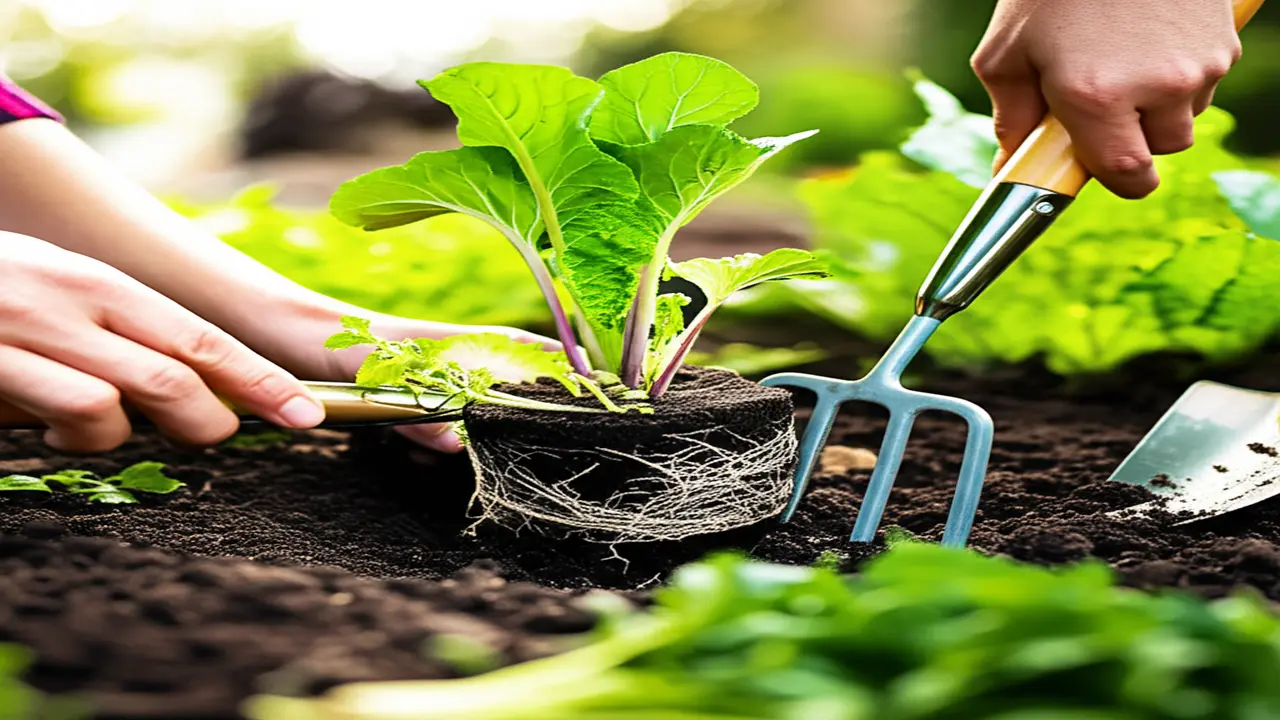
6. Loosening Soil Around Roots: Weeding and Transplanting with Care
In 2025, using the garden fork technique remains essential for gardeners aiming to preserve root health while managing weeds or transplanting plants. This method involves inserting the fork’s tines gently into the soil away from the plant crown, which is crucial to prevent root injury. Lever the fork carefully to loosen compacted soil, making it easier to remove persistent perennial weeds without damaging surrounding roots. When transplanting, apply the same technique to delicately pry up plants, minimizing stress and preserving soil structure. This approach supports root aeration and encourages healthy regrowth.
Key tips include:
– Insert the garden fork tines at least several inches from the base of the plant to protect delicate roots.
– Use a rocking or levering motion rather than forceful digging, which can break roots.
– Work around perennial weeds to lift roots efficiently for easier removal.
This practice complements other essential garden care methods such as proper watering and mulching (see chapter 4). Employing the garden fork technique also ties into effective soil preparation strategies detailed previously, ensuring plants thrive after transplanting or weeding. For gardeners seeking to deepen soil health knowledge, refer to our comprehensive guide on soil aeration techniques and related tools available on this site.
7. Specialized Techniques for Challenging Soil Types
8. Using a Garden Fork in No-Dig and Minimal Disturbance Gardening
In no-dig and minimal disturbance gardening, the garden fork technique plays a vital role in preserving soil health while facilitating plant growth. Unlike traditional digging, this method involves gently inserting the fork into the soil surface to aerate and loosen without turning over or disrupting the soil layers. This careful approach helps maintain the delicate balance of microbial life and soil structure essential for nutrient cycling and water retention.
Key techniques include:
– Using the fork to create small openings or pockets, for planting or watering, without inverting the soil.
– Gently lifting and loosening compacted areas by inserting the fork’s tines vertically and rocking slightly.
– Avoiding excessive penetration to protect beneficial fungi and earthworm habitats.
This approach aligns with sustainable soil care practices and supports long-term garden productivity. Experienced gardeners may explore combining the garden fork technique with mulching and organic matter additions to enhance soil vitality. See also advanced techniques on soil care methodologies to complement minimal disturbance gardening strategies.
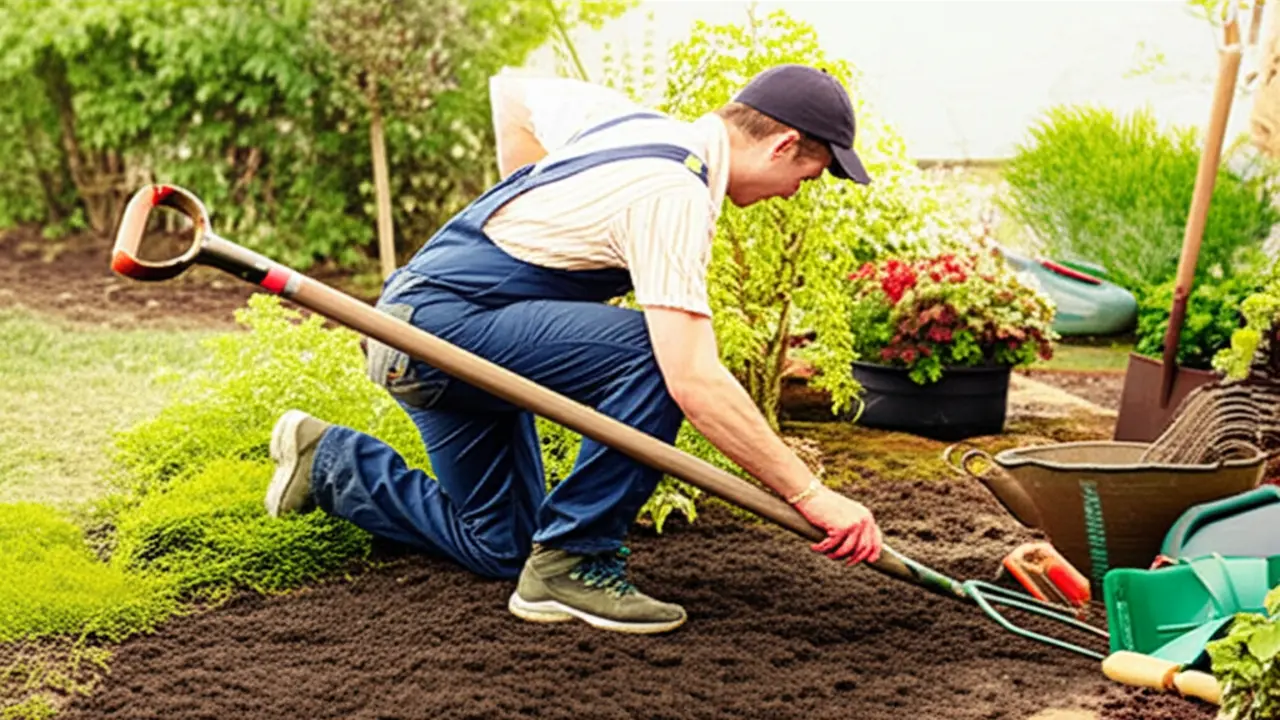
9. Ergonomic Best Practices: Preventing Injury While Using a Garden Fork
Using the right garden fork technique is crucial to prevent injury and fatigue during gardening tasks. Maintaining a straight back while lifting or digging helps protect the spine and reduce strain. Bend at the knees and hips, not the waist, to shift weight safely and engage stronger leg muscles. Proper footwear with good grip and support also stabilizes your stance and prevents slips.
In practice, when inserting the fork into the soil, use your body weight and leverage rather than muscle power alone to minimize effort. Change your hand positioning and body posture regularly to avoid repetitive strain. Taking short breaks allows muscles to recover and avoids overexertion. For example, after turning a few wheelbarrow loads of soil, pause to stretch your back and legs.
These ergonomic best practices not only enhance safety but also improve gardening efficiency and comfort. For detailed guidance on tool selection and use, see related advice in Chapter 7 on garden fork types and Chapter 8 on maintenance techniques to keep your equipment in top working condition.
10. Avoiding Common Mistakes in Garden Fork Use
Proper garden fork technique is essential to avoid common mistakes that reduce efficiency and risk injury. One frequent error is lifting soil loads that are too heavy, which strains the back and arms. Instead, load smaller amounts to maintain control and avoid fatigue. Twisting the torso while levering the fork is another issue; gardeners should pivot their feet and face the working area directly to prevent back strain.
Using worn or damaged forks compromises safety and performance. Regularly inspect your garden fork for bent tines or loose handles and replace if necessary. Forcing the tool into hard, dry soil can damage both the fork and your posture. Soften the soil with watering beforehand or use appropriate pruning tools for tough patches.
By correcting these mistakes, you not only protect your body but also improve gardening efficiency. Applying correct garden fork technique promotes longer tool life and a safer, more enjoyable gardening experience. For more on selecting quality forks, see our guide on garden fork types and uses.

